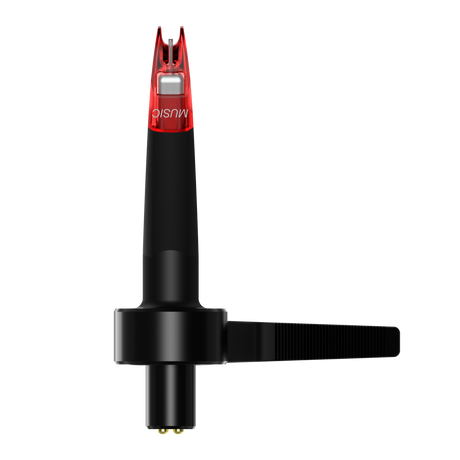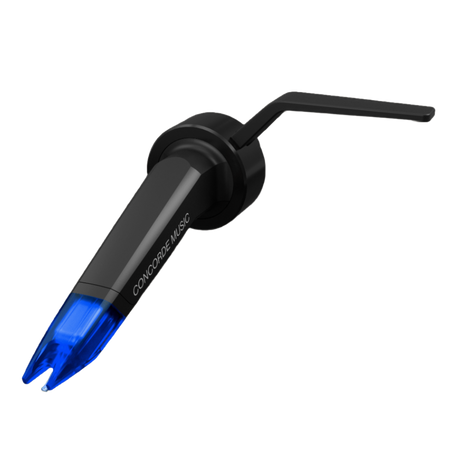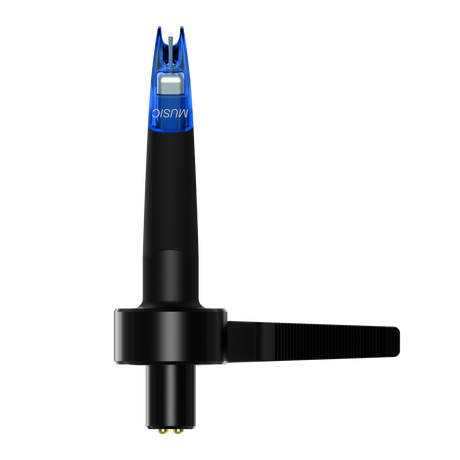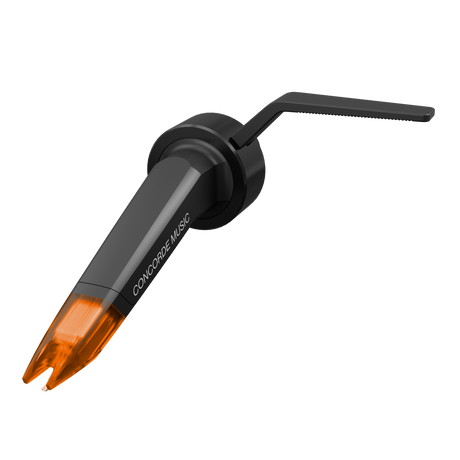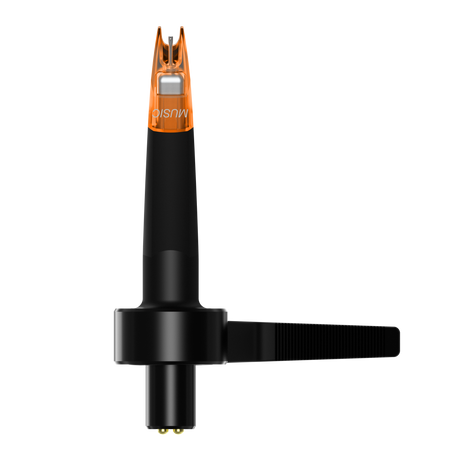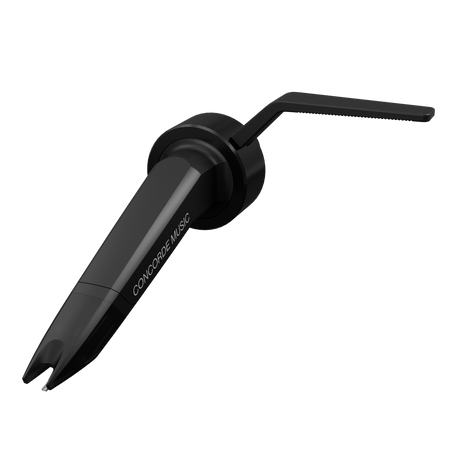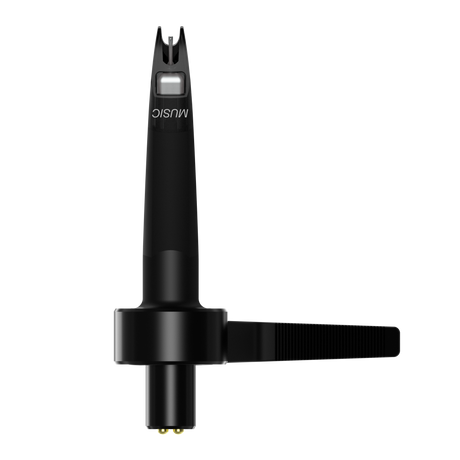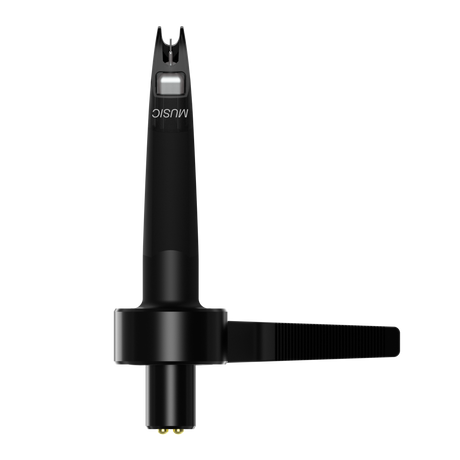When a Cartridge Became a Legend
If you've ever played a record with a Concorde, you're part of a story that began in 1979 - when Ortofon introduced a cartridge that looked like it belonged in a wind tunnel more than on a turntable. What followed was a story of technical setbacks, design awards - and the creation of a cartridge that would help define an era of vinyl.
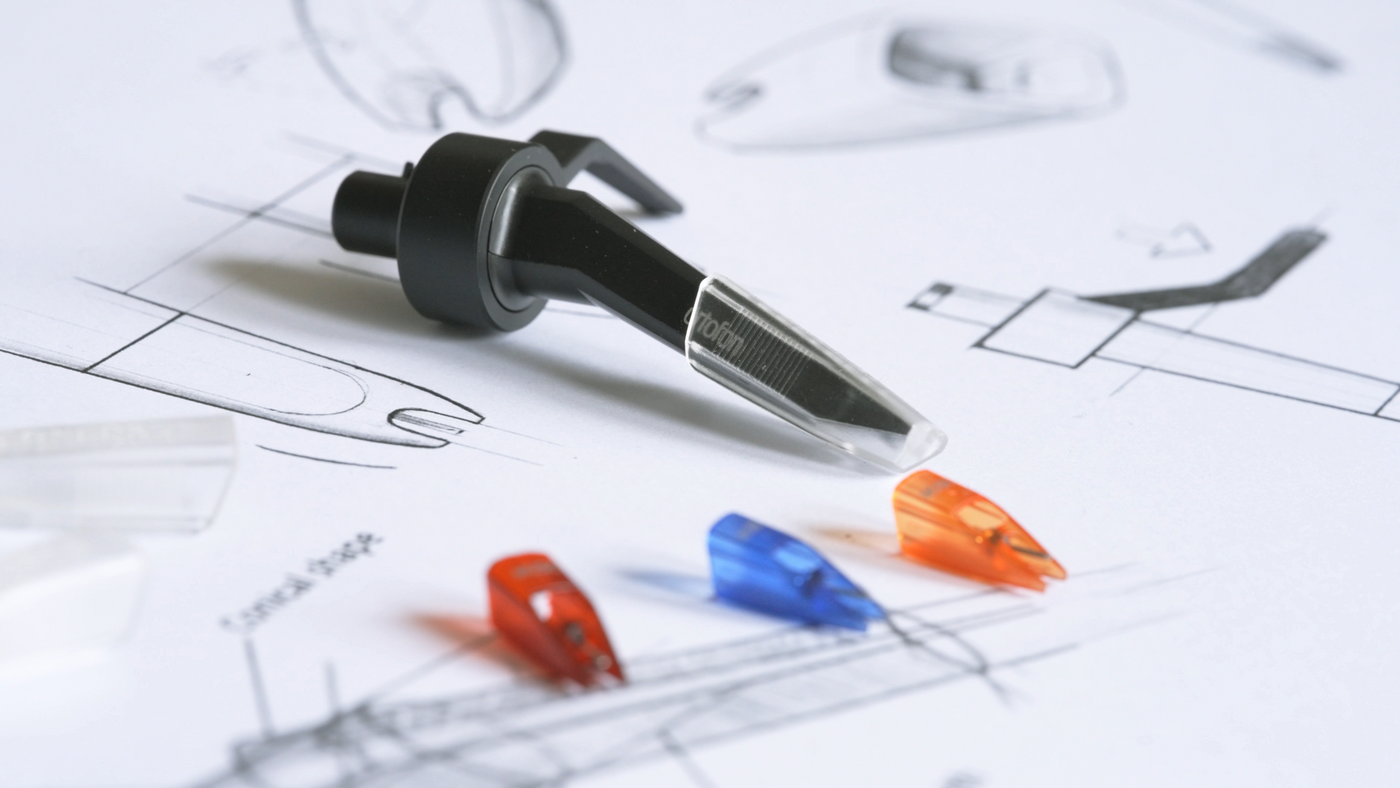
A Bold New Design
That Changed Everything
Ortofon had previously pioneered the integrated headshell concept with the SPU - a classic, high-mass moving coil cartridge designed for SME-type tonearms. But the Concorde marked a dramatic shift: a modern, lightweight evolution of the SPU principle, aimed at a new and broader segment of listeners.
The Concorde was born out of two goals: to develop a stylus with lower mass for Ortofon’s VMS system, and to create an integrated cartridge and headshell design that could be mounted without screws or wires. Elegant, streamlined, and minimal – the Concorde broke every design rule.
Its form was created in conjunction with award-winning Danish Industrial designer Møller Jensen, whose vision gave birth to the cartridge’s now-iconic look. “We thought, this is so different,” recalls Niels Jespersen, Sales Manager at the time, in A Century of Accuracy in Sound: The Ortofon 100-Year Anniversary Book. “In a meeting one day, I had a prototype in my hand, and I put it on the table so it was standing upright. It looked like the Luxor obelisk in the Place de la Concorde in Paris. Of course, the front of the Concorde jet airline also looked very similar to the cartridge. Everyone said, ‘That name makes sense, it looks like a Concorde.’”
The startling look of the Concorde cartridge received the prestigious Danish Industrial Design Award in 1979.
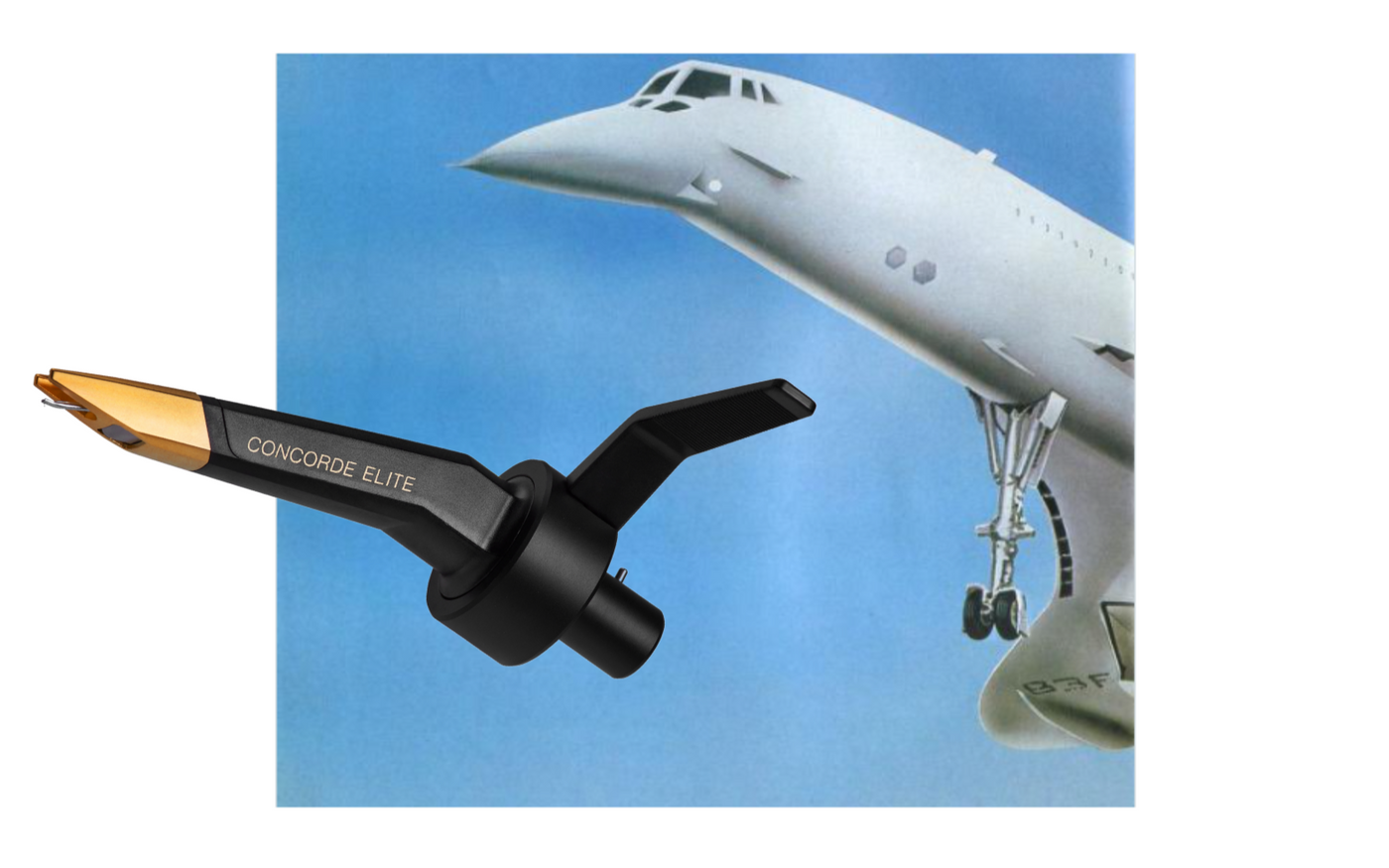
Innovation Amid Challenges
“It became a sensation because of the fantastic design. But it started as a failure,” said Erik Eriksen, one of the engineers on the Concorde project, in A Century of Accuracy in Sound. Ortofon had overestimated the number of turntables with SME mounting systems on the tonearm. If you didn't have that, you couldn't use it. The other problem was that the tonearms on regular turntables could not balance it out, because it was too light. The counterweight could not be moved close enough to balance it.
The solution was to have a small piece of metal that could be mounted between the cartridge and the tonearm to add some weight. At the same time, Ortofon introduced the LM 20 and LM 30 - cartridges designed for standard half-inch mount tonearms, offering broader compatibility than the Concorde. Although more conventional in shape, the LM models visually echoed the Concorde's distinctive front and stylus design, and served as forerunners to the OM series - found on many turntables today.
While this was a pragmatic solution, it was at odds with the company’s ethos to create elegant design. But it worked - and Concorde was on its way.
A few years after Concorde's lift-off, a moving coil variation was developed called the MC 200. “I remember the MC 200 was a result of the feedback we gave during the Golden Ear Panel* sessions,” Eriksen recalled in A Century of Accuracy in Sound. “It was an immediate success in countries like Germany and the UK. Still today, it is a fantastic sounding cartridge.”
Together with the MC 100, which had launched arround the same time, the MC 200 helped bring Concorde’s design language and performance into the moving coil universe. As the promotional literature for the MC 200 stated, it won “praise and prizes from audio experts everywhere, including Japan’s Stereo Components Grand Prix – the HiFi industry’s most coveted award.”
*The Golden Ear Panel
In the 1970s and ’80s, the internal Golden Ear Club played a key role in the critical assessment of Ortofon cartridges. Ortofon employees could apply to become members of the Golden Ear panel of listeners. You would need to qualify by passing a hearing test, and the panel was made up of both highly experienced listeners and less skilled ones – joining Ortofon’s skilled engineers and listening in a different way than, for example, HiFi reviewers. This approach led to different impressions of the sound and valuable insight for cartridge development.
-
€149,00Unit price /Unavailable
-
€249,00Unit price /Unavailable
-
€399,00Unit price /Unavailable
-
€599,00Unit price /Unavailable
-
€999,00Unit price /Unavailable
From Home HiFi to Nightclub DJs
Originally intended for domestic HiFi use, the Concorde’s role evolved dramatically. In the 1980s, DJs remained committed to vinyl - even as the rest of the industry moved digital. In 1984, Ortofon introduced DJ-specific models like the silver-colored Concorde Pro and OM Pro cartridges, designed to withstand the rigorous demands of club environments, hip-hop, and scratching. These models featured reinforced stylus suspensions capable of handling high tracking forces, making them indispensable tools for professional DJs worldwide.
In 1989, Ortofon launched the Concorde Nightclub Series - a clear acknowledgement of how vital this audience had become. DJ culture didn’t just embrace Concorde. It helped ensure Ortofon’s continued relevance.
Bringing the Concorde Full Circle
It has undergone continual remodelling ever since, as it has evolved from its original purpose as a domestic HiFi cartridge to its now revered status as a cartridge for nightclub DJs. And lastly, with the introduction of the new Concorde Music HiFi Series, it is returning once again to the world of high-fidelity audio.
The Concorde MkII Series continues to be trusted by DJs around the world, while the Concorde Music Series brings its legacy into home listening environments.
As vinyl finds new generations of listeners, the Concorde reminds us that design built to last can always find new purpose - whether on a DJ’s deck or your home system.



